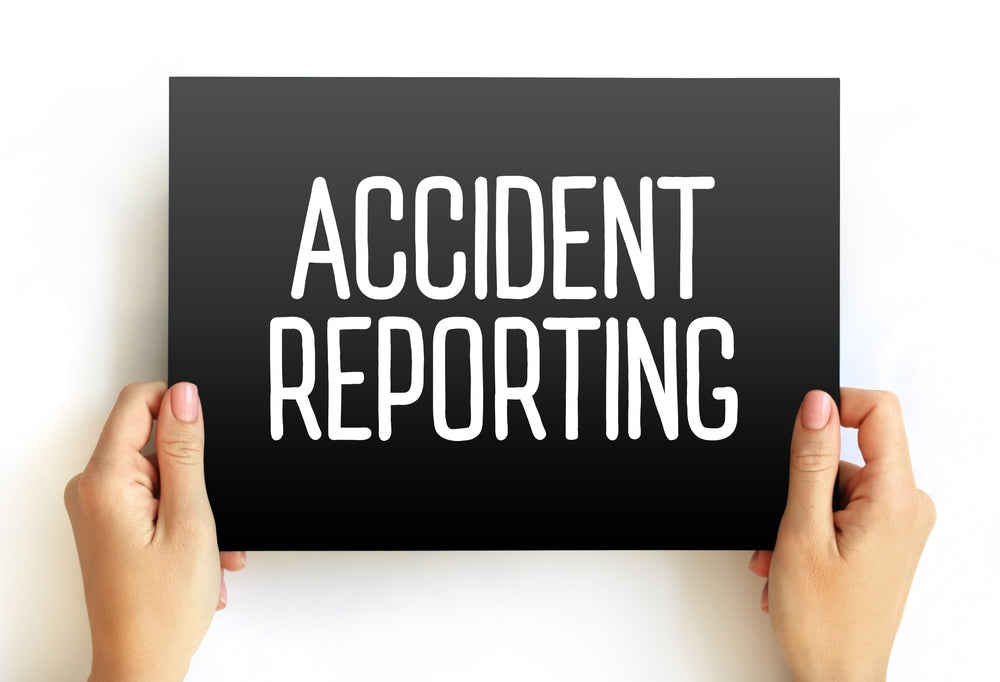Accident Causation Analysis

Accident Causation Analysis
Understanding the ACAT model of Accident Causation Analysis
It is very difficult to prevent accidents from happening at work but, if they do happen, you must handle them in a manner that satisfies your obligations. . If it is a serious incident, as well as calling the emergency services, you should notify the health and safety authority in your State or Territory immediately, in accordance with the relevant Workplace Health and Safety Legislation.
Workplace health and safety accidents can have a negative impact on your business in many ways. They can result in a loss of productivity, reduced staff morale, increased absenteeism, and even temporary or permanent closure.
According to research from Safe Work Australia, 120,355 people lodged a serious claim in 2019-20.
Accident Causation Analysis can help you figure out why an accident happened, and then prevent similar accidents from happening again. Classifying accident causes can give you a better understanding of accidents and also help in statistics. Although there are many models for classifying accident causes, some are specific to one area while others are too general or complicated to be practical.
The ACAT (An Accident Causation Analysis and Taxonomy) model presents a way to address the two basic issues of accident analysis:
- What is the failure, and
- How does the failure happen?
The model comes from both a system safety perspective and a control theory perspective. Complex systems can be decomposed into six components from the system safety perspective: machine, man, management, information, resources and environment. From the control theory perspective, actuator, sensor, controller and communication are defined as system factors' functional abstractions. The combinations of system factors and control functions form a matrix model for accident causation analysis and classification.
About this course
- Training Provider: OHS.com.au with AlertForce (RTO Code 91826)
- Location: Online
- Course length: Approx. 4 hours
- Time: Self-paced
- Certification / Accreditation: Certificate of Completion*
- CPD Points: Yes. 4 points as certificate of completion
Background - Swiss cheese model
The Swiss cheese model of accident causation was first put forward by James T. Reason of the University of Manchester and has since become a widely accepted accident causation model. This a model used in risk analysis and risk management, including aviation safety, engineering, healthcare, emergency service organizations, and as the principle behind layered security, as used in computer security and defense in depth. It likens human systems to multiple slices of Swiss cheese, stacked side by side, in which the risk of a threat becoming a reality is mitigated by the differing layers and types of defenses which are ‘layered’ behind each other. Therefore, in theory, lapses and weaknesses in one defense do not allow a risk to materialize, since other defenses also exist, to prevent a single point of failure.
In simple words, the idea behind it is that there are lots of different layers of defense against accidents, like the slices of cheese in Swiss cheese. So if one layer has a problem, there are other layers that will stop the accident from happening.
Course outline
Alertforce’s Accident causation analysis training course looks at how accidents and incidents happen, why they happen, and what we can do to prevent them. You'll analyse a variety of sources, from historical perspectives to current behavioural theories, for their application to today's workplaces. We'll also discuss accident investigation techniques and their legal implications. As part of your course requirements, you'll conduct a real or mock accident investigation.
This course is designed to create safer workplaces.
Learning form
Accident causation analysis course participants are encouraged to watch the videos and engage in group discussions after each video is finished. Facilitators and participants can review the key points from each video and module using the provided support material.
There are many ways to view and participate in discussions.
- E-learning Format
- Face-to face safety meetings
- Forum
Participants can upload the training videos to e-learning and view them online. Participants can review the support material online and answer any questions.
Face-to-face safety meetings allow participants to watch videos and participate in discussions. Face-to-face meetings allow for greater interaction and engagement, but can be logistically challenging.
You can also upload the videos to a forum. Participants can access the videos and other support materials via a private forum, company website, or by uploading them to a forum. Each module contains the answers to your questions.
You can also complete the course via email. Participants can email their answers to the discussion questions once they have watched the videos.
No matter how the material is delivered, all participants should have access to it. The support material includes discussion questions as well as the video script. Participants can use the questions to explore the effects of safety practices on their organization.
The modules also include scripts and reference materials. These materials allow participants to review and research the key points of the lesson.
Facilitators and participants can use the video scripts and questions to help them create an action plan. Participants can take specific steps and make suggestions to use the plan in their work environment.
SKU:
Course Highlights:
- On-demand Training
- Complete on Any Device
- Quality Focused
- Fast Certification
- Tax Deductable
- 100% Online
- 24 Months Unlimited Course Access
- Self-print Certificate
Couldn't load pickup availability

"Very detailed information, with the ability to shuffle and skip past parts that I knew. I actually enjoyed doing it. I was refreshed after completing the course. All in all, a fantastic refresher course."
Luke W."Straight forward and easy to understand. Thanks, OHS this is my second Refresher course."
Anonymous"Quick & relatively easy, done from the comfort of home."
David B"Really great courses on OHS website, would use this site again."
RhysADDITIONAL EXTRA BONUSES with OHS.com.au
Claim up to $1271.95 worth of Extra Bonuses
with every purchase
- Your personal copy of Safety Legends E-Book (value $39.95)
- $100 off your first case from Naked Wines (value $100)
- Upto 350,000 Bonus AMEX Frequent Flyer points* (value $1000)
- Complimentary Access to two online courses** (value $132)
$1271.95 EXTRA VALUE - JUST FOR YOU INSIDE!
* New customers when you successfully sign up for a new personal / business credit card ** Indigenous Cultural Awareness / Impacts of Climate Change coursesDescription
Understanding the ACAT model of Accident Causation Analysis
It is very difficult to prevent accidents from happening at work but, if they do happen, you must handle them in a manner that satisfies your obligations. . If it is a serious incident, as well as calling the emergency services, you should notify the health and safety authority in your State or Territory immediately, in accordance with the relevant Workplace Health and Safety Legislation.
Workplace health and safety accidents can have a negative impact on your business in many ways. They can result in a loss of productivity, reduced staff morale, increased absenteeism, and even temporary or permanent closure.
According to research from Safe Work Australia, 120,355 people lodged a serious claim in 2019-20.
Accident Causation Analysis can help you figure out why an accident happened, and then prevent similar accidents from happening again. Classifying accident causes can give you a better understanding of accidents and also help in statistics. Although there are many models for classifying accident causes, some are specific to one area while others are too general or complicated to be practical.
The ACAT (An Accident Causation Analysis and Taxonomy) model presents a way to address the two basic issues of accident analysis:
- What is the failure, and
- How does the failure happen?
The model comes from both a system safety perspective and a control theory perspective. Complex systems can be decomposed into six components from the system safety perspective: machine, man, management, information, resources and environment. From the control theory perspective, actuator, sensor, controller and communication are defined as system factors' functional abstractions. The combinations of system factors and control functions form a matrix model for accident causation analysis and classification.
About this course
- Training Provider: OHS.com.au with AlertForce (RTO Code 91826)
- Location: Online
- Course length: Approx. 4 hours
- Time: Self-paced
- Certification / Accreditation: Certificate of Completion*
- CPD Points: Yes. 4 points as certificate of completion
Background - Swiss cheese model
The Swiss cheese model of accident causation was first put forward by James T. Reason of the University of Manchester and has since become a widely accepted accident causation model. This a model used in risk analysis and risk management, including aviation safety, engineering, healthcare, emergency service organizations, and as the principle behind layered security, as used in computer security and defense in depth. It likens human systems to multiple slices of Swiss cheese, stacked side by side, in which the risk of a threat becoming a reality is mitigated by the differing layers and types of defenses which are ‘layered’ behind each other. Therefore, in theory, lapses and weaknesses in one defense do not allow a risk to materialize, since other defenses also exist, to prevent a single point of failure.
In simple words, the idea behind it is that there are lots of different layers of defense against accidents, like the slices of cheese in Swiss cheese. So if one layer has a problem, there are other layers that will stop the accident from happening.
Course outline
Alertforce’s Accident causation analysis training course looks at how accidents and incidents happen, why they happen, and what we can do to prevent them. You'll analyse a variety of sources, from historical perspectives to current behavioural theories, for their application to today's workplaces. We'll also discuss accident investigation techniques and their legal implications. As part of your course requirements, you'll conduct a real or mock accident investigation.
This course is designed to create safer workplaces.
Learning form
Accident causation analysis course participants are encouraged to watch the videos and engage in group discussions after each video is finished. Facilitators and participants can review the key points from each video and module using the provided support material.
There are many ways to view and participate in discussions.
- E-learning Format
- Face-to face safety meetings
- Forum
Participants can upload the training videos to e-learning and view them online. Participants can review the support material online and answer any questions.
Face-to-face safety meetings allow participants to watch videos and participate in discussions. Face-to-face meetings allow for greater interaction and engagement, but can be logistically challenging.
You can also upload the videos to a forum. Participants can access the videos and other support materials via a private forum, company website, or by uploading them to a forum. Each module contains the answers to your questions.
You can also complete the course via email. Participants can email their answers to the discussion questions once they have watched the videos.
No matter how the material is delivered, all participants should have access to it. The support material includes discussion questions as well as the video script. Participants can use the questions to explore the effects of safety practices on their organization.
The modules also include scripts and reference materials. These materials allow participants to review and research the key points of the lesson.
Facilitators and participants can use the video scripts and questions to help them create an action plan. Participants can take specific steps and make suggestions to use the plan in their work environment.
- Money Back Guarantee
- Save Time & Money
- Tax Deductible
- 1000's Trained Each Month
- Quality-Focused
- Peer Reviewed Courses
- Trusted Industry Partner
- Fast Certification
- 60 Day Guarantee
- *See refund policy


Got multiple people needing to do a course? We will get back to you within a day!
Student Reviews

Couldn't load pickup availability

Contact Us!
Contact form
ADDITIONAL EXTRA BONUSES with OHS.com.au
Claim up to $1271.95 worth of Extra Bonuses
with every purchase
- Your personal copy of Safety Legends E-Book (value $39.95)
- $100 off your first case from Naked Wines (value $100)
- Upto 350,000 Bonus AMEX Frequent Flyer points* (value $1000)
- Complimentary Access to two online courses** (value $132)
$1271.95 EXTRA VALUE - JUST FOR YOU INSIDE!
* New customers when you successfully sign up for a new personal / business credit card ** Indigenous Cultural Awareness / Impacts of Climate Change coursesDescription
Understanding the ACAT model of Accident Causation Analysis
It is very difficult to prevent accidents from happening at work but, if they do happen, you must handle them in a manner that satisfies your obligations. . If it is a serious incident, as well as calling the emergency services, you should notify the health and safety authority in your State or Territory immediately, in accordance with the relevant Workplace Health and Safety Legislation.
Workplace health and safety accidents can have a negative impact on your business in many ways. They can result in a loss of productivity, reduced staff morale, increased absenteeism, and even temporary or permanent closure.
According to research from Safe Work Australia, 120,355 people lodged a serious claim in 2019-20.
Accident Causation Analysis can help you figure out why an accident happened, and then prevent similar accidents from happening again. Classifying accident causes can give you a better understanding of accidents and also help in statistics. Although there are many models for classifying accident causes, some are specific to one area while others are too general or complicated to be practical.
The ACAT (An Accident Causation Analysis and Taxonomy) model presents a way to address the two basic issues of accident analysis:
- What is the failure, and
- How does the failure happen?
The model comes from both a system safety perspective and a control theory perspective. Complex systems can be decomposed into six components from the system safety perspective: machine, man, management, information, resources and environment. From the control theory perspective, actuator, sensor, controller and communication are defined as system factors' functional abstractions. The combinations of system factors and control functions form a matrix model for accident causation analysis and classification.
About this course
- Training Provider: OHS.com.au with AlertForce (RTO Code 91826)
- Location: Online
- Course length: Approx. 4 hours
- Time: Self-paced
- Certification / Accreditation: Certificate of Completion*
- CPD Points: Yes. 4 points as certificate of completion
Background - Swiss cheese model
The Swiss cheese model of accident causation was first put forward by James T. Reason of the University of Manchester and has since become a widely accepted accident causation model. This a model used in risk analysis and risk management, including aviation safety, engineering, healthcare, emergency service organizations, and as the principle behind layered security, as used in computer security and defense in depth. It likens human systems to multiple slices of Swiss cheese, stacked side by side, in which the risk of a threat becoming a reality is mitigated by the differing layers and types of defenses which are ‘layered’ behind each other. Therefore, in theory, lapses and weaknesses in one defense do not allow a risk to materialize, since other defenses also exist, to prevent a single point of failure.
In simple words, the idea behind it is that there are lots of different layers of defense against accidents, like the slices of cheese in Swiss cheese. So if one layer has a problem, there are other layers that will stop the accident from happening.
Course outline
Alertforce’s Accident causation analysis training course looks at how accidents and incidents happen, why they happen, and what we can do to prevent them. You'll analyse a variety of sources, from historical perspectives to current behavioural theories, for their application to today's workplaces. We'll also discuss accident investigation techniques and their legal implications. As part of your course requirements, you'll conduct a real or mock accident investigation.
This course is designed to create safer workplaces.
Learning form
Accident causation analysis course participants are encouraged to watch the videos and engage in group discussions after each video is finished. Facilitators and participants can review the key points from each video and module using the provided support material.
There are many ways to view and participate in discussions.
- E-learning Format
- Face-to face safety meetings
- Forum
Participants can upload the training videos to e-learning and view them online. Participants can review the support material online and answer any questions.
Face-to-face safety meetings allow participants to watch videos and participate in discussions. Face-to-face meetings allow for greater interaction and engagement, but can be logistically challenging.
You can also upload the videos to a forum. Participants can access the videos and other support materials via a private forum, company website, or by uploading them to a forum. Each module contains the answers to your questions.
You can also complete the course via email. Participants can email their answers to the discussion questions once they have watched the videos.
No matter how the material is delivered, all participants should have access to it. The support material includes discussion questions as well as the video script. Participants can use the questions to explore the effects of safety practices on their organization.
The modules also include scripts and reference materials. These materials allow participants to review and research the key points of the lesson.
Facilitators and participants can use the video scripts and questions to help them create an action plan. Participants can take specific steps and make suggestions to use the plan in their work environment.
- Money Back Guarantee
- Save Time & Money
- Tax Deductible
- 1000's Trained Each Month
- Quality-Focused
- Peer Reviewed Courses
- Trusted Industry Partner
- Fast Certification
- 60 Day Guarantee
- *See refund policy
Student Reviews

Course Highlights:
- On-demand Training
- Complete on Any Device
- Quality Focused
- Fast Certification
- Tax Deductable
- 100% Online
- 24 Months Unlimited Course Access
- Self-print Certificate
Couldn't load pickup availability

"Very detailed information, with the ability to shuffle and skip past parts that I knew. I actually enjoyed doing it. I was refreshed after completing the course. All in all, a fantastic refresher course."
Luke W."Straight forward and easy to understand. Thanks, OHS this is my second Refresher course."
Anonymous"Quick & relatively easy, done from the comfort of home."
David B"Really great courses on OHS website, would use this site again."
Rhys



Are you from a large organisation? Contact us for a group quote!
 Checkout securely with
Checkout securely with
Since 1999, OHS has been in the training industry, providing effective and practical online health and safety training courses. Our goal is to offer online refreshers that fit smoothly into the busy schedules of our clients, ensuring they stay current with the latest industry standards.
We provide a variety of training courses, such as VOCs/High Risk Refreshers, NDIS Training, Safety Training and Staff Training all crafted to be both flexible and cost-effective. By choosing us, you won't have to keep searching for terms like 'First Aid Training For Security Guards', 'Certo First Aid Training' or 'Grants For First Aid Training' because we're here to support your professional development needs.
Whether you need a single course or an annual subscription for unlimited access, OHS offers training options that seamlessly integrate with your schedule. Instead of scrolling through results for search terms like 'elearning victoria', 'first aid certificate online australia' or 'working in confined spaces ticket', contact us to learn more or buy a course today.
 1300 307 445
1300 307 445


